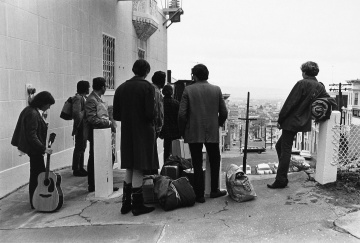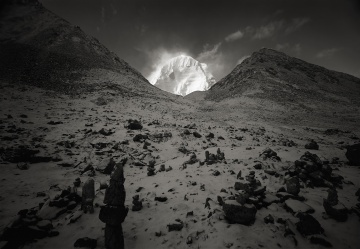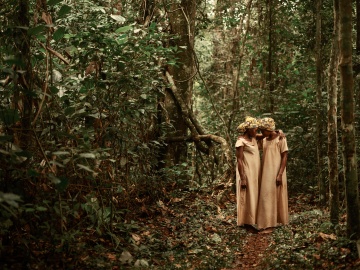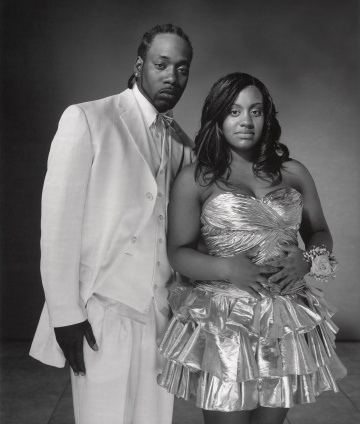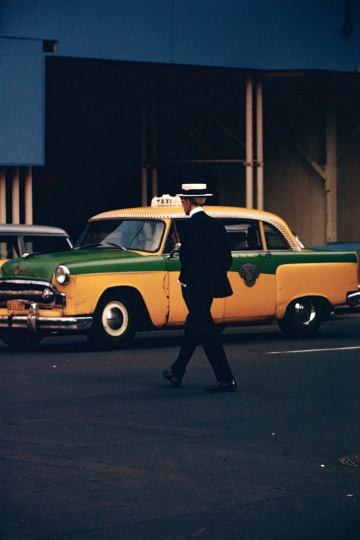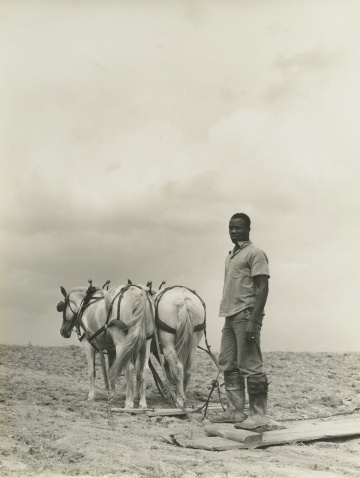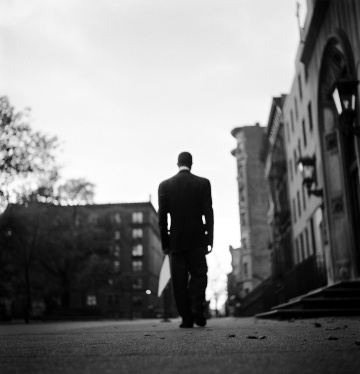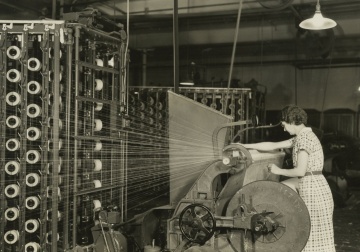Howard Greenberg Gallery
The Fuller Building
41 East 57th Street, Suite 801
New York, NY 10022
212 334 0010
41 East 57th Street, Suite 801
New York, NY 10022
212 334 0010
Since its inception almost forty years ago, Howard Greenberg Gallery has built a vast and ever-changing collection of some of the most important photographs in the medium. The Gallery's collection acts as a living history of photography, offering genres and styles from Pictorialism to Modernism, in addition to contemporary photography and images conceived for industry, advertising, and fashion. Maintaining diverse and extensive holdings of photographic prints, the gallery includes such masters as Eugène Atget, Henri Cartier-Bresson, Bruce Davidson, André Kertész, William Klein, Gordon Parks, Edward Steichen, Paul Strand, Josef Sudek, and Edward Weston on its roster of artists. More recent additions include Edward Burtynsky, Jungjin Lee, Alex Majoli, Joel Meyerowitz, Vivian Maier and Marvin Newman.
Howard Greenberg Gallery exclusively represents the estates of Berenice Abbott, Saul Leiter and Arnold Newman.
In 2018 Howard Greenberg Gallery became the primary representative of the Ray K. Metzker Archive. Formerly a photographer and founder of The Center for Photography in Woodstock in 1977, Howard Greenberg has been one of a small group of gallerists, curators and historians responsible for the creation and development of the modern market for photography. Howard Greenberg Gallery, founded in 1981, was the first to consistently exhibit photojournalism and 'street' photography, now accepted as important components of photographic art. After nearly 17 years in SoHo, Howard Greenberg Gallery moved to The Fuller Building, at 41 East 57th Street, in 2003. Consistent with its former downtown space, the midtown gallery reflects the need for a flexible yet intimate space where multiple exhibitions can be presented simultaneously.
Artists Represented:
Berenice Abbott
Frederic Brenner
Bill Burke
Edward Burtynsky
Bruce Davidson
Louis Faurer
William Gedney
Allen Ginsberg
Frank Gohlke
Sid Grossman
Dave Heath
Kenro Izu
James Karales
William Klein
Jacques-Henri Lartigue
Jungjin Lee
Saul Leiter
Leon Levinstein
Vivian Maier
Alex Majoli
Mary Ellen Mark
Ray K. Metzker
Joel Meyerowitz
Sarah Moon
Martin Munkacsi
Arnold Newman
Marvin Newman
Ruth Orkin
Gordon Parks
Marc Riboud
Peter Sekaer
Edward Steichen
Ed Van Der Elsken
James Van Der Zee
Roman Vishniac
Works Available By:
Margaret Bourke-White
Bill Brandt
Brassai
Harry Callahan
Henri Cartier Bresson
František Drtikol
Alfred Eisenstaedt
Walker Evans
Robert Frank
Lewis Hine
André Kertész
Dorothea Lange
Charles Marville
Lisette Model
Jacob Riis
August Sander
Aaron Siskind
W. Eugene Smith
Alfred Stieglitz
Paul Strand
Josef Sudek
Dr. Dain L. Tasker
Edward Weston
Minor White
William Gedney
A Time of Youth
In A Time of Youth Gedney presents the intertwined lives of young friends and lovers. We can see the intensity of these relationships in singular gazes, gestures, and embraces, both on the streets of San Francisco and in makeshift shared beds on apartment floors. Within these improvised spaces, swagger and self-consciousness are rendered visible through Gedney’s tight framing and sympathetic eyes. He made all the photographs in A Time of Youth between 1966 and 1967 while living for several months with the communities he photographed. Gedney was able to undertake a project of this length only through the support of a Guggenheim Fellowship that he received in 1966.
- Lisa McCarty
Assistant Professor of Photography, Southern Methodist University
Curator, Archive of Documentary Arts, Duke University (2014 – 2019)
Kenro Izu
Sacred Places
Spanning five continents and three decades, Kenro Izu’s Sacred Places is a body of work that looks with appreciation and melancholy upon many of humanity’s greatest architectural achievements. Izu’s travels were conducted in search of those sites and structures which were constructed for the exercise of our ever-present spiritual impulse and yearning for the cosmic. From the Pyramids in Egypt, to Angkor Wat in Cambodia, to Stonehenge in England, the obvious grandeur of these sites mixes with bewilderment at how so much could have been achieved so long ago, questions which even today we still strive to answer.
After working through the 1970s in New York as a studio assistant in the world of fashion photography, Izu experienced something of a perceptual realignment, an awakening of the senses as it were, when he first discovered the mammoth plate photographs made by English photographer Francis Frith during his excursions to Egypt in 1856 and 1857. The rich detail and elegiac tonality of Frith’s photographs captivated Izu, and in 1979 he set off to Egypt for the first time, followed soon thereafter by trips to England, Scotland, and Mexico - the outline of a project began to come into focus.
Having experimented with different cameras during his first trip, Izu found that large format was the only suitable option, and by 1983 he was equipped with a custom made camera that produced 14 x 20” negatives, a camera that was, at the time, very likely the largest portable camera in existence. In his search for a printing process that would realize the visual potential of his negatives, Izu learned of hand-coated platinum/palladium printmaking, which was first developed in the 1870’s. With the elements of his craft now able to keep pace with his creative vision, Izu was ready to create the images that comprise Sacred Places.
In his drive to capture the spirit of the places he was photographing, Izu began making progressively longer exposures, ranging anywhere from two to thirty minutes, and typically at dusk or dawn. His willingness to work through inclement weather and poor quality of light - conditions which typically act as impediments to a day’s work for a photographer - allowed him to access an expanded range of mood and atmosphere when photographing many of the most recognizable sites in the world. The ability to sidestep the conventional and the cliché allowed Izu to create photographs dense with time - the long exposures and richly detailed printmaking almost fixing the atmosphere in place.
Marvin E. Newman
Looking Past Shadows
From his earliest days as a photographer on the streets of Chicago, Marvin E. Newman has worked to harmonize formal experimentation with a sensitive, ever-present humanism. Whether on editorial commission for Sports Illustrated or Look Magazine (two of the many publications that he contributed to for the better part of five decades), or whether he was capturing the shadows and silhouettes cast by pedestrians on city streets, Newman’s photography has always been structured by a deep fascination with the medium’s fundamental duality: light and shadow. A pioneering color photographer, Newman helped define a standard for editorial work in that format during the 1950’s, a time when few photographers were shooting in color outside of fashion and advertising.
The training and tutelage Newman received from Aaron Siskind and Harry Callahan - both of whom were teachers at the Institute of Design in Chicago where Newman enrolled in 1950 and from which he graduated in 1952 - was instrumental. Newman’s Shadow series, produced in Chicago in 1951, was a moment of clear importance: “I felt as though I had discovered something there on the streets. Something only I was seeing.” The serial structure of those pictures was something he would return to repeatedly throughout the years.
By 1953 he was working in color regularly while on commission, and it was around this time that his own photography pivoted almost entirely in that direction: “Black and white simplifies things in its own way. We see the world in color, and I wanted my photographs to engage with that fact.” Working on the Coney Island boardwalk in the winter of this year, Newman produced photographs that combined his eye for the vernacular style of popular advertisements and billboards with his curiosity for those people who still populated the beach in spite of frigid weather.
Commissioned work often provided a framework for Newman to explore more personal aesthetic concerns. Photographing the New York Stock Exchange resulted in his Sun Shadow series, in which Newman captured stock traders silhouetted by the sun on the streets surrounding the Exchange, alone and nearly anonymous. The work he produced while inside the walls of the Exchange, however, describes a vastly different element of these men’s lives: feet shuffle and papers dust the trading room floor, as the collective blur of their bodies seems a mirrored reflection of the vast sums of money being moved from one end of the world to the other.
Newman’s capacity for distilling a defining quality of a scene into a graphically complex picture has been a consistent feature of his work throughout his career. Never content to work through problems of form alone, Newman’s photography has always stayed connected to spaces both personal and social, those domains of human expression that are, for him, perpetually new.
Pieter Henket
Congo Tales
NEW YORK— Howard Greenberg Gallery will present a viewing room exhibition of work from Pieter Henket’s Congo Tales, which explores cultural mythologies of the local inhabitants of the Congo Basin, containing some of the largest tropical rainforests in the world. The 2017 series has rarely been exhibited, and this is the first time the work is on view through a U.S. gallery.
A renowned portrait photographer, Henket achieved acclaim for his work with Lady Gaga, Eddie Redmayne, and Mary J. Blige, among others. Drawing on his mastery of lighting and mise en scène, Congo Tales presents the personal and collective stories of the people living in the Mbomo region of the Congo Basin in central Africa. The stories, which have linked generations together, have been translated into imagery for the first time by Henket who worked closely with the villagers and a team of researchers and conservationists. The project was spearheaded by the environmental activist group Tales of Us, which broadens global awareness of the cultural diversity of the most ecologically vital regions on the planet. The book Congo Tales was published in 2018 by Prestel.
The Congo Basin, the second largest tropical rainforest in the world next to the Amazon, has never occupied a prominent position in the global debate about climate change. Tales of Us attempts to correct this deficiency of awareness by drawing attention to both the importance of the Congo Basin itself, the persistent threats it faces via deforestation, and to the people who call the forest home, for whom it is a source of deep collective meaning.
In 2015, shortly after agreeing to collaborate with Tales of Us, Henket travelled to the Mbomo region to find his bearings and to develop some understanding of what working in that landscape would entail. Alongside Eva Vonk, a Dutch producer; Steve Regis “Kovo” N’Sondé, a Congolese artist and philosopher; and his brother Wilfried N’Sondé, a Congolese writer and musician, Henket developed relationships with the people of the region, collecting and organizing stories, which, historically, had only been communicated and passed along through oral tradition. Once the selection of stories had been made, Henket and the team worked with the villagers to determine which scenes and details to emphasize most in their photographic re-telling.
Over a period of 17 days in November of 2017, Henket, with the villagers as the actors, created multi-image representations of their stories, which communicate cosmic meaning and situational morality in equal measure. Whether needing to work in a remote terrain or deep in the rainforest, the stories were all treated with great sensitivity, and re-created through Henket’s intricately structured and richly-lit photographic tableaux.
Stories once confined to a single family’s history have been connected with those from other families, and those with the village and region as a whole. With the despoiling of the Congo Basin an omnipresent threat, the urgency for those living near the forest to stay and defend it has never been greater.
About Pieter Henket
Born into a family of artists, Henket’s early fascination with film and photography was bolstered when he moved to New York City in 1998 to enroll in a three-month documentary filmmaking course at New York University. Soon thereafter he began interning for the director Joel Schumacher, where Henket learned staging and production. Time spent experimenting in the studio and doing portraits of friends and strangers in equal measure resulted in editorial work for magazines such as Esquire. His photograph of Lady Gaga was used for the album cover of “The Fame” (2008), which sold over 15 million copies worldwide. The photograph was included in the exhibition American Woman: Fashioning a National Identity at the Metropolitan Museum of Art, New York, in 2010. In 2012 he photographed the Carnaval de Rio, a Brazilian carnival taking place every year in San Luis, a city in the mountains of Argentina. The work, Stars to the Sun, resulted in a book and several exhibitions, which led to a relationship with the environmental activist group Tales of Us.
Henket is the author of The Way I See It (Uitgeverij de Kunst, Uitgeverij Waanders, 2013); Stars to the Sun (Lannoo Publishers, 2014); and Congo Tales (Prestel, 2018). Henket’s work has been the subject of numerous exhibitions at institutions such as the Museum de Fundatie in The Netherlands, and the Museum Barberini in Germany. His work is held in the collection of the Rijksmuseum.
Mary Ellen Mark
Prom Night Polaroids
Beginning in 2006 Mary Ellen Mark began what would become a four-year project encompassing thirteen different high schools across America. Using two 20×24 Polaroid land cameras – a massive apparatus almost six feet tall and weighing 240 pounds, of which there were only five in the world – Mark photographed hundreds of teenagers on their prom night, an event that so often symbolizes the beginning of the transition into adulthood.
Having already developed an interest in photographing proms, with an eye towards emphasizing their socioeconomic and personal registers (she had, prior to this project’s beginnings, shot several proms using medium-format and 35mm cameras), Mark expanded the scope of her interest in the event by casting a wide, cross-country net, and by employing the aforementioned Polaroid camera, which was itself a kind of reflection of the subjects it so vividly rendered.
The Polaroid 20×24 produces a unique image, one with no negative from which future alterations may be made. As Mark discussed in the preface to her book on this work, Prom (2011), the entire process of properly calibrating the camera for each sitting was an onerous and challenging one. The results, however, were deemed more than worth it: large and richly detailed prints, the immediacy of which seemed to match that of its subjects.
Mark and her team worked to select students who would, collectively, represent a wide range of backgrounds and personalities. This diverse approach to selecting subjects was rooted in the expansive selection of schools in which she photographed: from public and private, to religious and single gender. This diversity of setting, coupled with Mark’s sensitivity towards her subjects, produced a many-layered portrait of American youth full of that unique mix of self-certainty and anxiety that our teenage years are so often characterized by, one that Mark, reflecting on her own prom, encapsulated so well: “The world was ours—or so we thought.”
Saul Leiter
The World Is Full of Endless Things: Saul Leiter's New York
This exhibition brings together a selection of Leiter's iconic color street photography, where reflections and abstractions so often reign supreme, with his rarely seen paintings and collages, work that he produced alongside his photography for the entirety of his life. Together, they illustrate the depth of his visual experimentation and curiosity, neither of which could be satisfied by the limits of a single medium.
One Third of a Nation: The Photographs of the Farm Security Administration
As the consequences of the Great Depression, unemployment, poverty and the effects of the Dust Bowl ravaged the country in the 1930s, government programs such as the Farm Security Administration (FSA) were established. American photographers were employed to document the dire conditions. At the same time, Lewis Hine was hired by the Works Progress Administration’s (WPA) National Research Project (NRP) to show the modernizing accomplishments of the nation’s factories, in the years prior to WWII. His efforts focused on the country’s reorganized workplace that fueled industrial growth and drove out the Depression. The powerful work of these photographers under President Franklin Delano Roosevelt’s New Deal programs ushered in an unprecedented new era for the medium: across the entire nation photography was communicating what words could not.
One-Third of a Nation: The Photographs of the Farm Security Administration
Imbued in the nation’s social consciousness, the images that illustrate the history of the Great Depression originated in presidential action. In his second inaugural address, Roosevelt poignantly stated, “I see one-third of a nation ill-housed, ill-clad, ill-nourished. The test of our progress is not whether we add more to the abundance of those who have much; it is whether we provide enough for those who have too little.”
In establishing the Resettlement Administration in 1935 – later renamed the Farm Security Administration in 1937 – Roosevelt created a robust response to help America’s poor farmers, sharecroppers, and migrant workers. Roy Stryker, an economist, was hired to document the situation and quickly developed an extraordinary roster of young photographers.
One Third of a Nation: The Photographs of the Farm Security Administration presents more than 50 photographs by Walker Evans, Dorothea Lange, Russell Lee, Carl Mydans, Gordon Parks, David Robbins, Arthur Rothstein, Peter Sekaer, Ben Shahn, and Marion Post Wolcott. From 1935 to 1943, the photographers of the FSA shot nearly 80,000 photographs traveling the country on assignments that could last for months at a time. Their touching portraits of children, concerned parents, struggling workers, and difficult living situations are regarded as some of the finest examples of modern documentary photography. The images proved in no uncertain terms that the nation needed to act.

Berenice Abbott, Diane Arbus, Jodi Bieber, Esther Bubley, Rebecca Lepkoff, Helen Levitt, Vivian Maier, Mary Ellen Mark, Frances McLaughlin-Gill, Lisette Model, Barbara Morgan, and Ruth Orkin
A Female Gaze
January 19, 2022 - April 2, 2022
Gordon Parks
A Choice of Weapons
October 8, 2021 - December 23, 2021
Parks, who described his camera as his “choice of weapons," was known for his work documenting American life and culture with a focus on social justice, race relations, the civil rights movement, and the African American experience. He was hired as staff photographer for Life magazine in 1948, where over two decades he created some of his most groundbreaking work that cast light on the social and economic impact of poverty, discrimination, and racism.
In 1969, Parks launched a pioneering film career by becoming the first African American to write and direct a major studio feature, The Learning Tree, based on his semi-autobiographical novel—a career move foreshadowed through his cinematic approach to photography.
Marking the 50th anniversary of the release of Parks' second feature-length directorial endeavor, Shaft (1971), a classic New York City detective film that spawned the blaxploitation genre, the gallery will present photographic works that reveal the artist's cinematic approach.
Parks' earliest photographs often imply a narrative beyond the individual frame, echoing his desire to represent complex facets of his subjects' lives and communities. Like his films, Parks' photographs present robust narratives that seek to reveal the complexities of his subjects’ lives.
The works on view include those staged in 1952 in collaboration with Ralph Ellison and inspired by his novel Invisible Man, as well as those made while Parks was embedded with the New York gang leader “Red” Jackson in 1948, and images of the Fontenelles, a Harlem family that struggled to feed their eight children in 1967.
The exhibition coincides with the release of the HBO documentary A Choice of Weapons: Inspired by Gordon Parks in November, and the extended presentation of works from his series The Atmosphere of Crime in the permanent collection galleries of the Museum of Modern Art, New York.
Lewis Hine
Lewis Hine: The WPA National Research Project Photographs, 1936-37
April 15, 2021 - July 2, 2021
A tale of collective ingenuity and individual perseverance in the shadow of national crisis is the subject of Lewis Hine: The WPA National Research Project Photographs, 1936-37, on view at Howard Greenberg Gallery from April 15 through July 2. The Great Depression ravaged the United States in the 1930s, producing extreme levels of poverty and unemployment with a deep and penetrating social pessimism to match. Whereas some photographic endeavors of the time sought to document the misery and misfortune of those hardest hit by these conditions, Lewis Hine set out to photograph the opposite: the rebuilding of society taking place in the nation’s most technologically advanced sites of production, and the persistence and skill of the factory workers who made all of it a reality.
Established in 1935 as a division of the Works Progress Administration (WPA), the goal of the National Research Project (NRP) was to investigate new industrial technologies and their effects on employment. Lewis Hine was hired by the WPA to show the modernizing accomplishments of the nation’s factories in the years prior to WWII, particularly those being fitted for the most sophisticated forms of industrial production. Hine focused most specifically on the reorganized workplaces that were created by these modernizing efforts. It was during this time, for example, that women began entering the factory floor and joining the assembly line, and in the case of Hine’s photographs, were being called upon to help produce many of the country’s newest and most elaborate technologies.
As a pre-eminent pioneer of American photography, Hine was most prominently known for chronicling the unjust and oppressive social conditions of his day, work which helped lead to the passage of the National Child Labor Laws in 1938. Eager to depict these new facets of technology, Hine photographed factory workers in textiles, furniture, cabinet making, radio manufacturing, construction, and mining, among others, in New Hampshire, Massachusetts, New York, New Jersey, Pennsylvania, North Carolina, and West Virginia. Fueled by his belief that labor was the soul of America, Hines’s portraits depict the dignity and industriousness of the individual worker at a time when industry was so often documented as a national endeavor.
Lewis Hine: The WPA National Research Project Photographs, 1936-37 presents more than 70 images. It is the most comprehensive exhibition ever mounted of Hine’s NRP photographs. The exhibition was inspired by the research of photographic historian Judith Mara Gutman. She writes in her 2018 book Lewis Hine: When Innovation Was King (Steidl/Howard Greenberg Library) that “Hine produced a cross-section of American working life….[and] imbued his photographs with a singular importance that elevated them beyond the generally accepted role of photographs as illustration to text.”
More than 80 years later, the photographs from the New Deal programs, and of the NRP in particular, underscore photography’s capacity for capturing the resilience of the human spirit in the face of historically challenging conditions. The work that Hine produced is emblematic in this regard, showing as it does what a nation is capable of when individual potential is coordinated and harnessed for the collective good.
Berenice Abbott, Nadav Kander, Jungjin Lee, Saul Leiter, Ray K. Metzker, Bruno V. Roels
It was all a dream
November 19, 2020 - April 6, 2021
Artists viewing the real world through an abstract lens

Harry Gruyaert
January 23, 2020 - March 14, 2020
NEW YORK—The first U.S. solo exhibition of Paris-based photographer Harry Gruyaert
(Belgian, b. 1941) will be on view January 23 through March 14, 2020, at Howard Greenberg Gallery. Well known in Europe for his street photography, his work is admired for its extraordinary use of color much like his American contemporaries Joel Meyerowitz, Saul Leiter, Stephen Shore, and William Eggleston. Gruyaert has been a member of Magnum Photos since 1982. An opening reception with the artist will be held on Thursday, January 23 from 6 to 8 p.m.
The 2018 documentary Harry Gruyaert Photographer illustrates how Gruyaert’s life was saved by color. Born to the repressed and grey background of a traditional Catholic Flemish family, Gruyaert later discovered the lights and color of Europe. Driven by the irresistible desire to be a photographer, he became a pioneer in European color photography. Gruyaert says “For me, photography is not only about composition and color, it has to say something about the time and the place.”
With an eye for idiosyncratic juxtapositions, Gruyaert has traveled the world finding bewildering beauty, complex constructions, and touching solitude. The exhibition covers his work in France, Spain, Belgium, Morocco, Japan, India, Russia and the U.S. Spanning four decades from 1981 through 2017, his photographs range from street scenes to seascapes, all punctuated with his unique, saturated approach to color. Often a lone figure can be found in his photographs, at times faceless or viewed from behind, evoking a loneliness of modern life or simply the serene banality of the quotidian.
“I am interested in that strange magic that occurs when things come together. I look to form a connection to a place. I have to be moved by something,” said Gruyaert recently from his studio in Paris.
In an introduction to his recent book, Edges (Thames and Hudson, 2019), the American artist Richard Nonas notes, “He photographs the boundaries that hover just beyond our sight…the shadows of an actual reality too blurred, too confused, too nuanced for any language to hold. He captures it whole. He holds it. As powerful art. As heart wrenching beauty. As the overwhelming mystery of ungrammatical silence.” A forthcoming book, Harry Gruyaert: Last Call, will be published in the U.S. in April 2020 by Thames & Hudson.
About Harry Gruyaert
Born in Antwerp, Belgium, in 1941, Harry Gruyaert studied at the School of Film and Photography in Brussels from 1959 to 1962. He moved to Paris to pursue a career in photography, while also working as a freelance director of photography for Flemish television between 1963 and 1967. In 1969, he made the first of many trips to Morocco, which led to a Kodak Prize for his Moroccan work in 1976. From 1970 to 1972, he lived in London. By the end of the 1970s, Gruyaert had made significant bodies of work in North Africa, the Middle East, the U. S., Europe and India, where he refused stereotypical exoticism in favor of a deeper aesthetic. Around the same period he also photographed his homeland Belgium. In 1982, he joined Magnum Photos. A number of solo exhibitions of his photographs have been held in Europe recently including the Fondation d’Entreprise Hermes, Paris, and the FOMU, Antwerp. He continues to travel the world, most recently to Japan in 2019.
His work is the topic of nearly 20 books including: Made in Belgium (Delpire, 2000); Harry Gruyaert: Rivages (Textuel, 2004); Harry Gruyaert: TV Shots by Jean-Philippe Toussaint (Steidl, 2007); Harry Gruyaert by Francois Hebel (Thames & Hudson, 2015); Harry Gruyaert: East/West (Thames & Hudson, 2017); Harry Gruyaert – Roots (Editions Xavier Barral, 2018); and Harry Gruyaert: Last Call (Thames & Hudson, 2019). Gruyaert’s photographs are held in the collections of the Centre Georges Pompidou, Bibliothèque Nationale de France; Foto/Industria, Bologna; Metropolitan Museum, Tokyo; Deutsche Börse Foundation, among many others.

Jessica Lange
Highway 61
November 21, 2019 - January 18, 2020
NEW YORK—Renowned actress Jessica Lange will present an exhibition of her photography at Howard Greenberg Gallery from November 21, 2019 through January 18, 2020. The exhibition, Highway 61, presents a tribute to the storied route which Lange has traveled countless times since her childhood in Northern Minnesota. Highway 61 originates at the Canadian border, near Grand Portage and runs 1,600 miles along the Mississippi River though the American Midwest and South, rolling through eight states, down to New Orleans. This is Lange’s second exhibition at Howard Greenberg Gallery. The exhibition coincides with the publication by PowerHouse of her fourth book Highway 61. An opening reception will be held on Thursday, November 21 from 6-8 p.m.
Over the last seven years, Lange has revisited Highway 61 many times to photograph the historic route. Her photography series reveals the thoughtful and powerful connection Lange continues to maintain towards the people and places in this part of America. Lange has noted that "long stretches of 61 are empty, forlorn, as if in mourning for what has gone missing — the hometowns, the neighborhoods, family farms, factories and mills."
“It’s a great counterpoint to filmmaking,” Lange has said about photography, “because it’s a private, solitary experience. It’s like writing or painting; it’s something you can do on your own. Acting is a co-dependent art form, and the actor is not in control. And filmmaking definitely informs the decision to photograph something. I’m drawn to situations with a dramatic feel to them as far as lighting or backdrop or people’s presence, the way someone stands.”
About Jessica Lange
Born and raised in Cloquet, Minnesota, Jessica Lange studied photography at the University of Minnesota after winning a scholarship to study the arts. Her photographs have been exhibited at George Eastman House, Rochester, New York, 2009; Multimedia Art Museum, Moscow, 2014; Centre d’Art Santa Mònica, Barcelona, 2015; and Centro Cultural de Cascais Portugal, 2015, among others. She was the first recipient of the George Eastman House Honors Award in 2009. Lange’s previous books include her debut monograph 50 Photographs (PowerHouse, 2008), In Mexico (RM, 2010) and a children’s book It’s About A Little Bird (Sourcebooks, 2013). Lange began making photographs in the 1990s when her partner of 26 years, the late playwright and actor Sam Shepard gave her a Leica camera as a gift. She dedicated her book Highway 61 to Shepard.
An Academy Award-winning actress, Lange is well known for her roles in King Kong, Tootsie, The Postman Always Rings Twice, Frances, Blue Sky, and Grey Gardens. She is the 13th actress in history to achieve the Triple Crown of Acting, having won two Academy Awards, three Primetime Emmy Awards, one Tony Award, one Screen Actors Guild Award and five Golden Globe Awards. She can currently be seen in The Politician on Netflix.
Don McCullin
September 11, 2019 - November 16, 2019
Bard x HGG, curated by Stephen Shore
June 20, 2019 - August 29, 2019
Bruce Davison
Time of Change
June 20, 2019 - August 29, 2019
Bruce Davidson
Central Park
June 20, 2019 - August 29, 2019
Photographs from the Collection
March 26, 2019 - June 15, 2019
James Van Der Zee
Studio
March 7, 2019 - April 27, 2019
Aaron Siskind
January 10, 2019 - March 2, 2019
Ray K. Metzker
Black & Light
January 10, 2019 - March 2, 2019
Edward Burtynsky
Anthropocene
November 14, 2018 - January 5, 2019
Vivian Maier
The Color Work
November 14, 2018 - March 2, 2019
Jungjin Lee
Opening
September 12, 2018 - November 10, 2018
The New Beginning for Italian Photography: 1945-1965
September 12, 2018 - November 10, 2018
William Klein
September 12, 2018 - November 10, 2018
Staff Picks VII
July 10, 2018 - August 30, 2018
Gallery Collection
July 10, 2018 - August 30, 2018
Saul Leiter
In My Room
May 10, 2018 - June 30, 2018
Arnold Newman
One Hundred
May 10, 2018 - June 30, 2018
Bruno V. Roels
A Palm Tree Is A Palm Tree Is A Palm Tree
March 22, 2018 - May 5, 2018
Ed van der Elsken
“Love” & Other Stories
March 22, 2018 - May 5, 2018

 Back to all Member Galleries
Back to all Member Galleries

